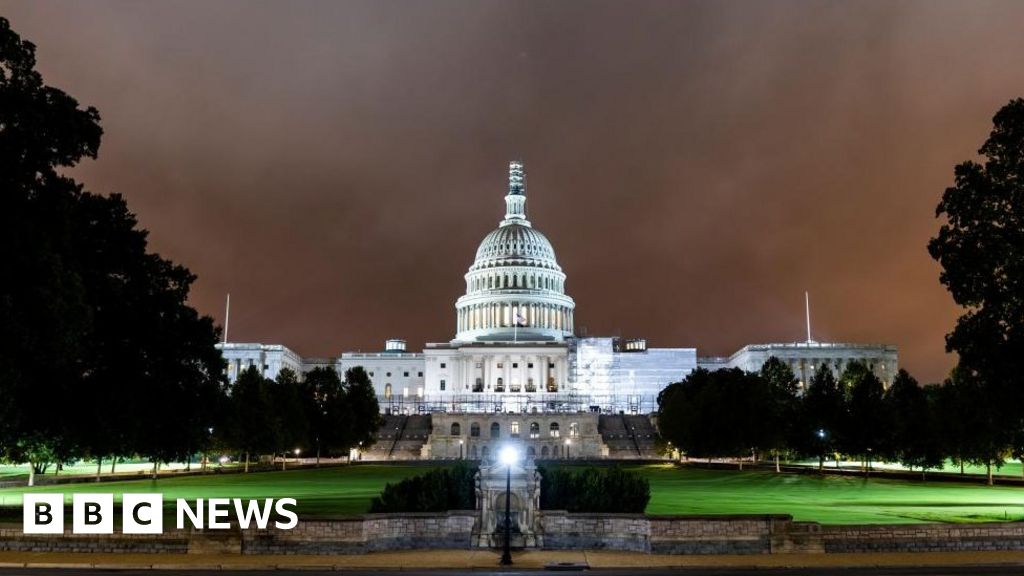#Why government shutdowns seem to only happen in US

The US government has shutdown ten times over the past 40-plus years. Meanwhile, in other countries, governments keep functioning, even in the midst of wars and constitutional crises. So why does this uniquely American phenomenon keep happening?
For most of the world, a government shutdown is very bad news – the result of revolution, invasion or disaster. That leaders of one of the most powerful nations on Earth willingly provoked a crisis that suspends public services and decreases economic growth is surprising to many.
In a last-minute deal in September, Congress managed to avoid a shutdown by passing a stop-gap spending bill that kept the government running for another 45 days. But that means the politicians have to go back to the bargaining table, and the country could be facing another shutdown yet again, once the funding runs out.
So why does this keep happening?
America’s federal system of government allows different branches of government to be controlled by different parties. It was a structure devised by the nation’s founders to encourage compromise and deliberation, but lately it has had the opposite effect.
That’s because in 1980, the Attorney General under President Jimmy Carter’s administration issued a narrow interpretation of the 1884 Anti-Deficiency Act. The 19th Century spending law banned the government from entering into contracts without congressional approval; for almost a century, if there was a gap in budgets, the government had allowed necessary spending to continue. But after 1980, the government took a much stricter view: no budget, no spending.
That interpretation has set the US apart from other non-parliamentary democracies, such as Brazil, where a strong executive branch has the ability to keep the lights on during a budget impasse.
The first US shutdown occurred shortly after in 1981, when President Ronald Reagan vetoed a funding bill, and lasted for a few days. Since then, there’s been at least ten others that led to a stop in services, lasting anywhere from half-a-day to over a month. The last one, from 21 December 2018 to 25 January 2019, was the longest on record.
- What happens in a US government shutdown?
While some essential services did continue to run, like social security and the military, hundreds of thousands of federal workers were not paid. At the time, the White House estimated that the shutdown reduced GDP growth by 0.1 percentage points for every week the salary stoppage went on.
Elsewhere in the world, such shutdowns are practically impossible. The parliamentary system used by most European democracies ensures that the executive and legislature are controlled by the same party or coalition. Conceivably, a parliament could refuse to pass a budget proposed by the prime minister, but such an action would likely trigger a new election – not a stoppage in services like national parks, tax refunds and food assistance programmes.
That’s exactly what happened in Canada in 2011, when opposition parties rejected the budget proposed by then-Prime Minister Stephen Harper’s Conservative Party, which had a minority of seats in parliament. The House of Commons then passed a motion of no-confidence, triggering an election. Meanwhile, the government’s services ticked away.
Even in Belgium, which did not have an elected government in power for 589 days between 2010-2011, the trains kept running.
More recently, Ireland managed to keep everything running from 2016-2020 under a minority government with a confidence-and-supply system, which is when parties not in power agree to support spending bills and confidence votes.
But this type of cooperation has become increasingly rare in the US, where warring political parties seem all-too willing to use the day-to-day functioning of the government as a bargaining chip to extract demands from the other side. The most recent near-shutdown, for example, was the result of a minority of hardline conservative Republican members of Congress demanding deep spending cuts that centrists in their own party and Democrats would not support.
A deal was finally reached on 30 September, but with a huge caveat: no additional funding for the Ukraine war.
With the clock ticking on the 45-day stop-gap funding, it remains to be seen what kind of new deal will be reached – if one can be reached at all.
If you liked the article, do not forget to share it with your friends. Follow us on Google News too, click on the star and choose us from your favorites.
For forums sites go to Forum.BuradaBiliyorum.Com
If you want to read more News articles, you can visit our News category.




